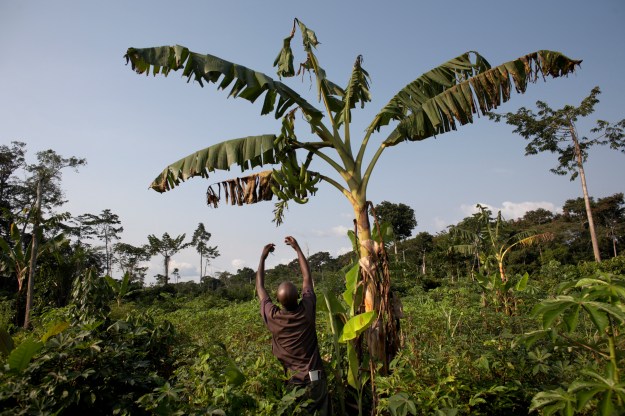From the 1930s to 1960, Yangambi Research Station was the Belgian headquarters for ecological, biological, and agricultural research in Africa. The station once housed 250 homes and many offices and research facilities, including an herbarium and a library. It stretches more than 20 miles inland from the Congo River.
At its height, approximately 250 scientists, 500 technicians, and 1,000 workers were based here in occupations ranging from medicine to carpentry. If the families of staff members and the stream of visitors were included in the headcount, the population would have numbered in the several 1000s. In 1960 Congo became independent of the brutal Belgian colonial regime, under which at least 10 million Congolese are estimated to have been killed or worked to death. The vast majority of those living at Yangambi Research Station fled, and the facility began to fall into disrepair.



The war in the 1990s halted any possibility for renovations to the station. For the past decade, a dedicated skeleton crew has made a futile attempt to stave off further decline. They live in the houses and work to maintain the library and herbarium, spending most days trying to save materials from the damp and preserve the thousands of plant specimens from the Congo. In recent years, funding from the Mellon Foundation and collaborative work with the National Botanical Gardens of Belgium as well as initiatives by the local government are helping to modernise the library and herbarium.
The complex known as “Kilometer 5” is where the preeminent banana expert and Belgian scientist Edmond De Langhe lived in the 1950s and planted bananas from all over the world. When he left in 1960, banana types he had researched and bred, including YK5 and Ibota Ibota—a complex high-yielding selection—spread throughout Congo and beyond.
Today, research at Yangambi’s Kilometer 5 is on the frontline of attempts to breed a banana resistant to the deadly Panama Disease, which threatens to wipe out the common Cavendish banana found in supermarkets worldwide. Many scientists believe it is only a matter of time before the disease spreads to Africa and Latin America. With no commercially viable alternative, the fallout from Cavendish’s demise could be catastrophic. The creation of the YK5 banana could be even more far-reaching than the Yangambi researchers imagined in their heyday.








